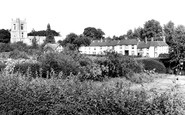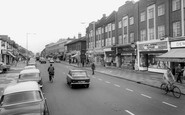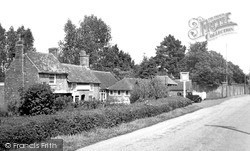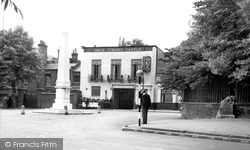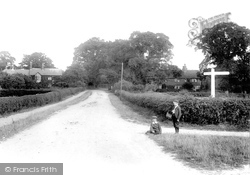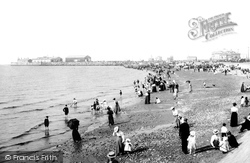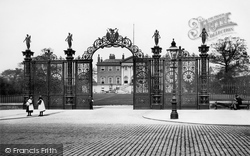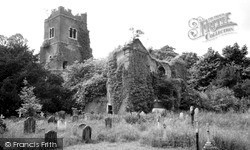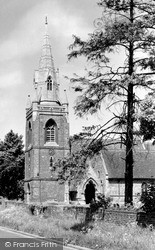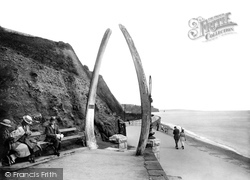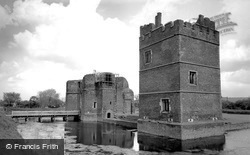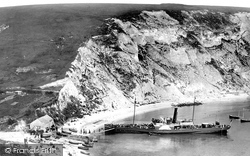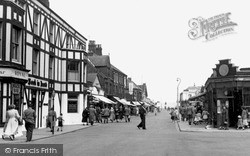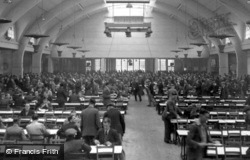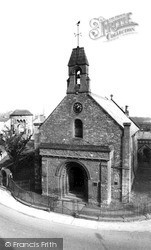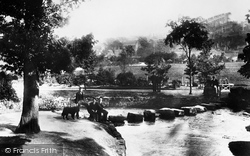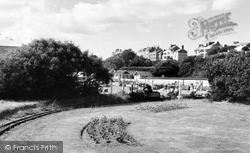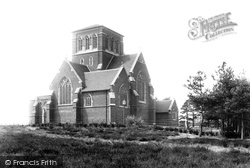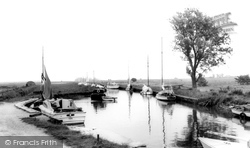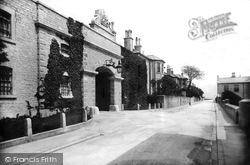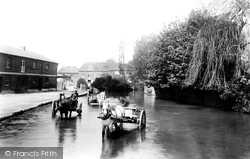Places
Sorry, no places were found that related to your search.
Photos
Sorry, no photos were found that related to your search.
Maps
Sorry, no maps were found that related to your search.
Books
Sorry, no books were found that related to your search.
Memories
741 memories found. Showing results 51 to 60.
The Salford Girl
I was born in 1947 and lived at 52 West St, Lower Broughton, Salford 7. I attended St. John's School for girls, just off Chapel St. My parents were Annie and David Johnson. I had an older sister, Jean, and a younger brother, David. My ...Read more
A memory of Salford by
Brampton Road Primary School
I began my school days during the 1950's at Brampton Road Primary School, Bexleyheath. My over-riding memory is a time of innocence, wonder and happiness, where we were given freedom to learn and be creative in a ...Read more
A memory of Bexleyheath by
Longleat
My grandfather Cecil Welch, who was the local estate agent and auctioneer based at the Old Town Hall in the High Street, bought several old cottages next to the blacksmiths in Church End for his son John and wife Peggy, at the vast ...Read more
A memory of Great Dunmow in 1948
Boyhood Memories From 1952
It was around this time that the tram lines were taken up from Sunderland Road in Gateshead. The men stored the old lines in Somerset Street and Devonshire Street. As boys we would dig up the tar from around the ...Read more
A memory of Gateshead in 1952 by
The Smallfield Brickyard
I was born at 1 Kings Cottages in April 1931. I have two brothers, and as young boys we were close friends of the late Gerald Mitchel. Gerald's mum, nee Doris King, lived with her husband (Syd, who served with the RAF) ...Read more
A memory of Smallfield in 1930 by
River Row
My family lived in the end cottage in River Row,our garden backed on to the river and railway line beyond.My brother and I were aged 3 and 4 years old and I can remember waving to my father as he went to work in the pits, the train ...Read more
A memory of Treherbert in 1951 by
Those Were The Days 2
It didn't change until the sixties when the station was rebuilt and opened by Her Majesty Queen Elizabeth 11 in 1961. I watched the whole building project from start to finish from the comfort of my bedroom window. When it ...Read more
A memory of Barking in 1950 by
Fenland Farming Around Peterborough
On reading the book 'PETERBOROUGH A Miscellany' a couple of items are incorrect by my own knowledge and experience. Page 4 : 'Dockey' was a word almost exclusive to fen farmworkers, it was the break taken ...Read more
A memory of Peterborough in 1952 by
Mossford Garage
I started work at the age of 15 years as 'the boy', apprentice mechanic at Mossford garage. I remember going down the High Street to Pither's bakeries to get ham and cheese rolls, as well as pies for the mechanic's tea breaks. ...Read more
A memory of Barkingside in 1965 by
Childhood
In the 1960s I lived in Ogilvie Terrace and spent lots of days wandering happy and safe in Deri. I remember the nut wood, picking whinberries, Doreen's shop, the gas pipes where we balanced and luckily did not come to harm, the horse-shoe ...Read more
A memory of Deri in 1960 by
Captions
493 captions found. Showing results 121 to 144.
We are in the Cuckmere Valley, with fine views of the scarp side of the Downs.
The pub occupies a picturesque setting on the crown of the hill, and is named after the leader of the Peasants' Revolt of 1381.
The Old Mill 1906 This is the brick lower storey of a windmill built around 1800 by a Crawley millwright, Morley, and situated east of the Recreation Ground.
The vicar of St George's envisaged a need for a hospital, and so in 1866 he set up a hospital in a house on the corner of Cross Street and Albert Street - it became known as St George's Hospital.
We can see the stone jetty in the distance: it was still the main anchorage for ships when our photograph was taken.
Warrington's Town Hall was originally Bank Hall, built between 1749-50 by the world-famous architect James Gibbs as a home for a local businessman, Thomas Patten.
The picturesque growth of trees and ivy which has been allowed to flourish unchecked took its toll on the brick structure, and the church, probably designed by Nicholas Stone and consecrated by Archbishop
St Michael's has a south aisle dating back to the early 14th century, its windows with Y and intersecting tracery, but the brick tower with clasping buttresses is 1737.
Over 20 ships were wrecked in the bay between 1850 and 1917.
The vicar of St George's envisaged a need for a hospital, and so in 1866 he set up a hospital in a house on the corner of Cross Street and Albert Street - it became known as St George's Hospital.
The window boxes of the George Hotel are still a feature today, and the range of buildings on the right of the photograph continues to be used as shops, now antiques and furnishings, although previously
The vicar of St George's envisaged a need for a hospital, and so in 1866 he set up a hospital in a house on the corner of Cross Street and Albert Street - it became known as St George's Hospital.
If one has time to glance westward, the castle is just visible from the M1 motorway as it heads northward into the Charnwood Forest.
The WB&SSPCo paddler 'Victoria' disembarks trippers on to the steep-shelved beach in Lulworth Cove.
The arrival of the railway in 1877 put Mablethorpe on the seaside holiday map, and the town is mainly Victorian or later.
Part of the main dining room during an average lunch break. This building also housed management dining facilities, the Social Club, and private meeting rooms.
This view shows the Monnow Gate that stands on the bridge of the same name to the left.
The arrival of the railway in 1877 put Mablethorpe on the seaside holiday map, and the town is mainly Victorian or later.
This park was laid out for the benefit of working people to give them a break from the dust and grime of industrial Sheffield.
All of this area of the sea front is now part of the Exmouth Fun Park, a modest theme park for the young and not so young who want a break from the miles of sandy beaches.
Attributed to Pearson and built in the Early English style, this large, red-brick church was built in 1896-7, so it was relatively new in Francis Frith's photograph.
From Acle to Yarmouth the Bure flows through low-lying, flat marshland with few trees to break the skyline.
Portland prison was a grim institution during Victoria's reign, with convicts spending long days breaking stone in the nearby quarries with pickaxe and crowbar.
Before the Town Bridge was strengthened, heavy carts had to ford the river from either the ramp at the sunlit break beyond the trees or another ramp on the right beside the bridge.
Places (0)
Photos (0)
Memories (741)
Books (0)
Maps (0)

